V.TEC.1732 - Quantifying Objective Measurement value propositions and enablers for beef and sheep processors and industry
A calculator now exists to help understand the value objective measurement devices could deliver to specific supply chains.
| Project start date: | 10 March 2024 |
| Project end date: | 15 November 2025 |
| Publication date: | 17 November 2025 |
| Project status: | Completed |
| Livestock species: | Grain-fed Cattle, Grass-fed Cattle, Sheep, Goat, Lamb |
| Relevant regions: | National, International |
Summary
The value propositions for the use of objective measurement (OM) technology for beef and sheep processors and industry have been calculated use both live animal and carcase technologies which measure key traits including Lean Meat Yield (LMY) and Intramuscular Fat (IMF%). The value propositions are calculated for seven scenarios for grass, short and long grainfed beef supply chains. This report updates the 2019 industry modelling, taking into account the commercially available IMF devices now being used in sheep and the increase in number of grainfed animals. The use of improved and automated chiller sortation based on hot OM measurements has increased the benefits to sheep and beef processors in Scenario 5: Optimise livestock purchased to market specifications and Scenario 6: Fabrication of purchased livestock to optimise value.
Objectives
Specifically, the project will deliver the following outcomes:
- identify the decision points that impact OM related value propositions, and the associated data including OM data required to assess value
- map the key value proposition (such as Buy, Make and Sell) processes relative to value trade-offs and apply value overlays to quantify the benefit OM technology could deliver within commercial constraints
- assess the data integration challenges to be addressed for value resulting from application of OM measures
- from a processor's perspective, assess the challenges, costs and resultant return on investment (ROI) for integration of OM outputs to be implemented in commercial supply chain transactions (including value based marketing (VBM) or value based pricing (VBP)
- build processor Excel models using MLA formatting standards which enable scenario modelling and quantification of value propositions based on OM technologies' accuracy, with these provided to MLA as confidential models specific to each processor, as well as a non confidential generic model
- quantify value creation opportunities at a producer and processing plant level using Excel models on OM value propositions for existing markets and distribution channels
- review, update and revise the existing industry level OM adoption and first round impact Excel models built by Greenleaf based on current and predicted industry adoption and average per head benefits, including providing a non confidential summarised report
- identify tools and enablers which are required to facilitate adoption and realise the value benefits
- consolidate findings of adoption enablers, ROI and recommendations into non-confidential industry report.
Key findings
The benefits for industry have increased in some areas and decreased in other areas over the last five years. The overall net benefit for the beef industry has increased from $1.17 Billion to $1.38 Billion and the sheep industry benefit has increased from $440 million to $497 million. These benefits have been calculated for the period from 2025 to 2045. The main causes of the changes in benefit are as follows:
- Accelerated adoption of OM technology for LMY & LMY% in the sheep meat industry.
- During the last review no technologies were being utilised for IMF% in sheep – these have been approved and are being used in commercial supply chains currently.
- The adoption of technologies to collect data on LMY% in the beef industry has had limited update and therefore this has reduced the benefit estimated for Scenarios 1 and 2 for beef.
- The adoption of technologies for marbling in long-fed programs has increased the adoption rate and subsequent genetic gain in long-fed cattle programs, subsequently increasing the overall benefit Scenario 3.
- The utilisation of OM technologies for eating quality has enabled processors to start marshalling carcases earlier enabling some processors to start gaining the benefits for Scenario 5 and 6 even without the adoption of technology for LMY% detection. This benefit has been increased for these Scenarios but not to the maximum that could have been achieved with the adoption if the LMY technologies.
Benefits to industry
A processing plant benefit calculator was built enabling individual processing plants to select their livestock types, supply chain, OM devices and where they located in the processing to calculate the potential value uplift. The benefit calculator also facilitates the upload of carcase grading data to enable calculations based on their unique carcase types.
MLA action
MLA will work with industry to validate the calculator tool that has been created and the assumptions made in this modelling. The aim of this work is to accelerate the uptake of objective measurement technologies so the potential benefit modelled can be realised.
Future research
The ability to detect IMF% and other EQ factors in hot and cold carcases provides opportunities for improved market and product differentiation and for improved selection and management practices to optimise IMF% and days on feed. Hot measurements of LMY are limited and would provide value uplift for the industry and individual supply chains.
More information
| Project manager: | Jack Cook |
| Contact email: | reports@mla.com.au |
| Primary researcher: | Greenleaf Enterprises Pty Limited |


